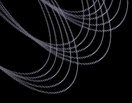
| Home |
| Where to Start |
| News and Updates |
| Tutorials |
| Data Products |
| Data Access |
| Sky Coverage |
| Instruments |
| Data Flow |
| Algorithms |
| Glossary |
| Help and Feedback |
| Search |
 |
Calibrated object listsUp: Data Products Sections: General - Images - Object lists - Spectra - TilingGetting and using object listsYou need to look at the object flags in the object lists to obtain meaningful results. Calibrated object lists are stored in two file types:
The The data access page contains various query forms to search the object lists by coordinates, magnitude, color etc., and to retrieve data from the archive. CaveatsPrimary caveats for DR1 betaThe following points apply to the current DR1 beta, produced with version 5_3 of the photometric pipeline. The next data release will contain data which have been reduced with version 5_4, which fixes the bug in 5_3 which leads to these caveats. See About DR1.
Caveats: subtleties and minor bugs in DR1Sky brightness values are extinction-correctedThe various measures of sky brightness reported in the
Object countsThe AstrometryA bug was found in the reported right ascension and declination
(and all other celestial coordinates, such as l and b,
of course) for those rare sources
that are not detected in the r band. For example, this bug affects extremely
red objects (brown dwarfs and high-redshift quasars) that are detected only
in the z-band. The r-band
astrometric solution was applied to the
centroid position in the band in which the object in question was detected.
As there is typically a few arcsecond offset between the bands,
this results in a few arcsecond error in the position. The error can be corrected by
examining the fields To obtain the correct position for these objects,
determine Very red objectsThe u magnitudes of very red stars, with spectral types later than about M0 (u-i > 4), are affected by camera-column and imaging-run dependent systematic variations of order 0.1 mag, as determined, e.g., from changes in the stellar locus of these very red stars in color-color diagrams. The cause of these u-band systematics is not fully understood at present, but may be due to a u-band red leak problem which appears to be larger than original design specifications (due to the effects of the dewar vacuum shifting the wavelengths of the interference coatings used to reject red leak for the u filters). This issue of u-band systematics for very red stars is being actively investigated, and we will post our findings at this web site once we have a fuller understanding of the problem. Position anglesThe position angle fields in the DR1 dataset (those
processed through photo v5_3 and target v4_5 or lower),
have position angles modulo 360 degrees rather than the
proper standard of modulo 180 degrees (or in the range
[-90,90] degrees). Please convert the position angles
to mod 180 or to [-90,90] yourself as needed.
This affect the fields: Sky determinationThere are known problems in the determination of the background sky at the level of a few hundredths of a DN. This seems tiny, but gives noticeable non-uniformities in the Petrosian photometry in the u band of large (>10'') galaxies. We think we have found a fix, but as of this writing, it is not yet tested. Deblending of bright galaxiesThe SDSS image deblender works completely automatically, and needs to work both for the case of a saturated star superposed on the disk of a face-on spiral galaxy, a small cluster of faint stars, and an asteroid moving next to a galaxy. It is known to occasionally incorrectly deblend galaxies brighter than r=16th magnitude, giving unphysical deblends in a few percent of the galaxies in the UZC (Falco et al, 1999, PASP, 111, 438). At the brightest magnitudes, this fraction probably increases substantially. Further improvements to the software, to be included in DR2, are known to reduce this error rate substantially. Similarly, there are quite a few false negatives: typically poorly deblended saturated stars that manifest themselves as bright galaxies. Again, this should be much improved in DR2, but in the meantime, visual inspection will be needed for any astronomer wishing to put together a complete catalog of bright galaxies, or to obtain photometry for galaxies brighter than r=16, from the SDSS outputs. Last modified: Tue May 27 16:23:45 CDT 2003 |